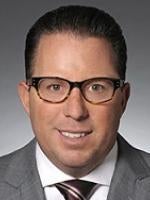On August 25, the Securities and Exchange Commission (SEC) adopted amendments to Form ADV and to certain rules promulgated under the Investment Adviser Act of 1940, as amended (the "Advisers Act").[1] These amendments will be effective sixty days after publication in the Federal Register, which is expected to happen shortly. Investment advisers will need to comply with the amendments beginning October 1, 2017. This means that any adviser filing an initial Form ADV or an amendment to an existing Form ADV on or after October 1, 2017 will be required to provide responses to the revised form. Likewise, any communications circulated or distributed by an adviser will need to comply with the amended books and records rule beginning October 1, 2017.
The amendments to Form ADV address the following:
-
New Questions Regarding Separately Managed Accounts
-
Revised Questions Regarding Investment Advisers
-
Other Clarifying Amendments
-
Umbrella Registration
There is a chart at the end of this advisory summarizing the significant amendments to Form ADV.
Regarding the amendments to the rules under the Advisers Act, this advisory focuses on amendments to Rule 204-2 under the Advisers Act, the "books and records" rule.
Amendments to Form ADV
New Questions Regarding Separately Managed Accounts
Historically, Form ADV has not gathered any specific information regarding the separately managed accounts of an investment adviser.[2] The SEC is adopting the amendments to Form ADV to enhance its ability to carry out its risk-based examination program and other risk assessment and monitoring activities by including questions related to separately managed accounts.
The SEC is adding four new questions to Item 5 of Part 1A of Form ADV. Depending on how those four questions are answered, an adviser may need to provide additional information in new Section 5.K. of Schedule D of Form ADV, which requests aggregate data regarding separately managed accounts managed by the adviser. Advisers with at least $10 billion in regulatory assets under management (as defined by Form ADV, "RAUM") attributable to separately managed accounts they advise (SMA RAUM)[3] will report, on an annual basis, both their mid-year and end-of-year data for Section 5.K.(1) and (2)(a) of Schedule D; advisers with less than $10 billion in SMA RAUM will report only end of year data for Section 5.K.(1) and (2)(b) of Schedule D. A subadviser would be required to provide information only about the portion of the account that it subadvises.[4]
In Section 5.K.(1) of Schedule D, advisers will be required to report the approximate percentage of SMA RAUM that are invested in twelve broad asset categories. Because the SEC recognizes that certain categories may overlap, the SEC is allowing advisers to use their own internal methodologies (or those of their service providers) to determine how to categorize assets, so long as the methodologies are consistently applied and consistent with information the advisers report internally and to current and prospective clients. Advisers are cautioned not to double count assets and or to "look through" investments in other funds and report the underlying asset type, as the SEC wants information in order to evaluate the extent to which separately managed account assets are invested in funds as well as other types of investments.
In Section 5.K.(2) of Schedule D, advisers with at least $500 million in SMA RAUM will be required to report information regarding the use of borrowings and derivatives for the separately managed accounts they advise.[5] Advisers with at least $500 million but less than $10 billion will be required to report on Section 5.K.(2)(b) the amount of SMA RAUM and the dollar amount of borrowings attributable to those assets that correspond to three levels[6] of gross notional exposures.[7] Advisers with at least $10 billion in SMA RAUM will be required to report on Section 5.K.(2)(a) the information required in Section 5.K.(2)(b) as well as derivative exposures across six derivatives categories.[8] An adviser may exclude from the aggregated information (and therefore not report on) any separately managed account with assets of less than $10 million.
In Section 5.K.(3) of Schedule D, advisers will be required to identify any custodians that account for at least ten percent of SMA RAUM, and the amount of the adviser's SMA RAUM held at each such custodian.
As Form ADV is a public form, the above information also will be available to the public. Even though the SEC received numerous comment letters expressing concern about the public availability of this information, the SEC concluded that the public interest in the information outweighs any privacy concerns, especially since the information is aggregated.[9]
Revised Questions Regarding Investment Advisers
The SEC also adopted several other amendments to Form ADV questions regarding investment advisers:
This information only needs to be updated as part of an adviser's annual updating amendment and not more frequently.
-
Each adviser must provide all of its assigned CIK numbers (if any), regardless of public reporting status.
-
If applicable, an adviser must provide the internet address of each of the adviser's social media pages in addition to the internet address of each of the adviser's websites in Section 1.I. of Schedule D. However, an adviser does not need to provide Internet addresses to (1) social media pages where the adviser does not control the content of such pages; (2) internal social media platforms or information not intended to promote the adviser's business to potential clients (e.g., information posted on a job board intended to attract job applicants); (3) the social media accounts of the adviser's employees; and (4) social media pages that are used solely to promote the business of an affiliate or affiliates that are not advisers registered with the SEC.
-
Advisers must provide the total number of offices at which they conduct investment advisory business and the following information in Section 1.F. of Schedule D about their 25 largest offices (as measured by the number of employees):
-
each office's CRD branch number (if applicable);
-
the number of employees who perform advisory functions from each office;
-
the business activities conducted from each office (from a list of securities-related activities); and
-
a description of any other investment-related business conducted from each office.[10]
-
-
An adviser must disclose in Item 1.J. whether its chief compliance officer is compensated or employed by any person other than the adviser (or a related person of the adviser or a registered investment company that is advised by the adviser) for providing chief compliance officer services to the adviser, and if so, to report the name and IRS Employer Identification Number (if any) of that other person. This Item seeks identification of so-called "outsourced" chief compliance officers.
-
An adviser must report in Item 1.O. its own assets (as distinguished from assets under management) within three ranges: (1) $1 billion to less than $10 billion; (2) $10 billion to less than $50 billion; and (3) $50 billion or more.[11]
-
An adviser must report, for each category of clients, the number of its clients (or, if fewer than five clients, that fact) in the specific category and the amount of RAUM attributable to each category of clients, as of the date the adviser determines its RAUM. If a client fits into more than one category, then the adviser is instructed to select the category that most accurately represents the client in order to avoid double counting clients and RAUM. To the extent that the adviser is a subadviser to a registered investment company, business development company, or pooled investment vehicle, the adviser must report those sub-advised assets as such (and not as assets of another investment adviser). Advisers also must report the number of clients for which they provided advisory services even where the client's assets are not part of the adviser's RAUM. An example of a situation where an adviser provides investment advice but does not have "regulatory assets under management" is a nondiscretionary account or a one-time financial plan, depending on the facts and circumstances.
-
An adviser that elects to report client assets in Part 2A of Form ADV differently from the RAUM it reports in Part 1A of Form ADV is now required to check a box noting that election.[12]
-
Advisers must report the approximate amount of their total RAUM attributable to clients that are non-United States persons.[13]
-
Advisers must report the regulatory assets under management of all "parallel managed accounts"[14] related to a registered investment company (or series thereof) or business development company that they advise (as reported in Item 5.G.(3)).[15]
-
Advisers must report the relevant identifying numbers in response to two questions – CIK numbers in response to Section 7.A of Schedule D, Question 4(b) (financial industry affiliations) and the numbers assigned by the Public Company Accounting Oversight Board in response to Section 7.B.(1) of Schedule D, Question 23(e) (private fund auditors).
-
An adviser to a private fund that qualifies for the exclusion from the definition of investment company under section 3(c)(1) of the Investment Company Act of 1940 (a "3(c)(1) fund") must report whether it limits sales of the 3(c)(1) fund to "qualified clients" (as defined in Rule 205-3 under the Advisers Act, "Qualified Clients").[16]
Other Clarifying Amendments
The SEC also adopted several other technical or clarification amendments to Form ADV While most were immaterial, the following amendments to Section 7.B.(1) of Schedule D are of interest:
-
Advisers should not complete Section 7.B.(1) of Schedule D for any private fund if another SEC-registered adviser or SEC exempt reporting adviser (including a subadviser) reports the information required by Section 7.B.(1) of Schedule D for that private fund.
-
For Question 19, advisers should not consider feeder funds as "clients" when answering whether the adviser's clients are solicited to invest in the private fund, as the intent of Question 19 is not to capture affiliated feeder funds.
-
Question 21 has been revised to ask if the private fund has ever relied on an exemption from registration of its securities under Regulation D, in order to capture funds that had previously relied on Regulation D but no longer do so.
-
Questions 23(g) and (h) have been revised to better indicate the time frame referenced by the questions. Question 23(g) now asks if the fund's audited financial statements are distributed to the private fund's investors for the most recently completed fiscal year. Question 23(h) now asks if the report prepared by the auditing firm contains an unqualified opinion since the date of the adviser's last annual updating amendment.
Umbrella Registration
The SEC adopted changes to Form ADV that formally incorporate guidance that the SEC had previously provided to private fund advisers detailing how one adviser (the "filing adviser") could file a single Form ADV on behalf of itself and other advisers that were controlled by or under common control with the filing adviser (each, a "relying adviser"), provided that all of the advisers conducted a single advisory business (an "umbrella registration").[17]
To satisfy the requirements of Form ADV while using umbrella registration, the filing adviser is required to file, and update as required, a single Form ADV (Parts 1 and 2) that relates to, and includes all information concerning, the filing adviser and each relying adviser, and must include this same information in any other reports or filings it must make under the Advisers Act or the rules thereunder (e.g., Form PF).
Umbrella registration is only available for advisers that operate a single advisory business. The SEC has stated that it considers the following factors to be the indicia of a single advisory business:
-
commonality of advisory services and clients;
-
a consistent application of the Advisers Act and the rules thereunder to all advisers in the business; and
-
a unified compliance program.
The SEC adopted as instructions for Form ADV conditions (designed to demonstrate a single advisory business) under which advisers may use an umbrella registration, as follows:
-
the filing adviser and each relying adviser must advise only private funds and clients that (1) are Qualified Clients; (2) are otherwise eligible to invest in the private funds advised by the filing adviser or a relying adviser; and (3) invest in separately managed accounts that pursue investment objectives and strategies that are substantially similar or otherwise related to those private funds;
-
the filing adviser has its principal office and place of business in the United States;
-
each relying adviser, its employees and the persons acting on its behalf are subject to the filing adviser's supervision and control;
-
the advisory activities of each relying adviser are subject to the Advisers Act and the rules thereunder, and each relying adviser is subject to examination by the SEC; and
-
the filing adviser and each relying adviser operate under a single code of ethics adopted in accordance with Rule 204A-1 under the Advisers Act and a single set of written policies and procedures adopted and implemented in accordance with Rule 206(4)-(7) under the Advisers Act and administered by a single chief compliance officer in accordance with that rule.
The SEC also revised the instructions to Form ADV to specify which questions should be answered solely with respect to the filing adviser and which require the filing adviser to answer on behalf of itself and its relying adviser(s).
The filing adviser will need to complete a new Schedule R to Form ADV for each relying adviser. Schedule R requests the following information: identifying information (Section 1); basis for SEC registration (Section 2); form of organization (Section 3) and control persons (Section 4).
The filing adviser will also need to identify the filing advisers and relying advisers that manage or sponsor private funds reported on Section 7.B.(1) of Schedule D.
Amendments to Advisers Act Rules
The SEC also adopted amendments to Rule 204-2, which will require advisers to maintain additional materials related to the calculation and distribution of performance information.
First, the SEC removed the condition of Rule 204-2(a)(16) that records supporting performance claims in communication only need to be kept if such communications are distributed or circulated to ten or more persons. Under the amended rule, advisers will be required to maintain the materials listed in Rule 204-2(a)(16) that demonstrate the calculation of the performance or rate of return in any communication that the adviser circulates or distributes, directly or indirectly, to any person.
Second, the SEC amended Rule 204-2(a)(7) to require advisers to maintain originals of all written communications received, and copies of written communications sent, by an investment adviser relating to the performance or rate of return of any or all managed accounts or securities recommendations. Emails are "written communications" for purposes of the rule.
ADV Amendments Chart
|
Form ADV Section |
Current Requirement |
New Requirement |
|
Item 1.N. (will be Item 1.D.) |
Report CIK numbers if a public reporting company. |
Report CIK numbers regardless of public reporting status. |
|
Item 1.I. / Section 1.I. of Schedule D |
Report adviser's website(s) (if any). |
Report adviser's website(s) and social media page(s) (if any). |
|
Item 1.F. / Section 1.F. of Schedule D |
Report about five largest offices. |
Expanded reporting about twenty-five largest offices. |
|
Item 1.J. |
Report name and contact information for CCO. |
Also report if CCO is employed by a third party and who that third party is. |
|
Item 1.O. |
Check the box if RAUM of $1 billion or more. |
Report one of three asset ranges. |
|
Item 5.C. and Item 5.D. |
Report ranges related to:
|
Report actual number of clients and amount of regulatory assets under management attributable to each category of clients as of the date the adviser determines its regulatory assets under management. |
|
Item 5.D. |
N/A |
An adviser that elects to report client assets in Part 2A of Form ADV differently from the regulatory assets under management it reports in Part 1A of Form ADV is now required to check a box noting that election. |
|
Item 5.F.(3) |
N/A |
Advisers must report the approximate amount of their total regulatory assets under management attributable to clients that are non-United States persons. |
|
Section 5.G.(3) of Schedule D |
N/A |
Advisers must report the regulatory assets under management of all "parallel managed accounts" related to a registered investment company (or series thereof) or business development company that they advise. |
|
Item 5.I. / Section 5.I. of Schedule D |
Check the box if the adviser participates in a wrap fee program and the name and sponsor of each such wrap fee program. |
Also report the total amount of regulatory assets under management attributable to acting as a sponsor to or portfolio manager for a wrap fee program and the SEC File Number and CRD Number for sponsors to those wrap fee programs. |
|
Item 5.K. / Section 5.K. of Schedule D |
N/A |
Reporting related to separately managed accounts |
|
Section 7.A. and 7.B.(1) of Schedule D |
N/A |
Advisers must report the relevant identifying numbers in response to Question 4(b) of Section 7.A. and Question 23(e) of Section 7.B.(1). An adviser to a 3(c)(1) fund must report whether it limits sales of the 3(c)(1) fund to Qualified Clients. |
[1] The Form ADV and Investment Advisor Act Rules are available here. These rules were first proposed in May 2015, available here.
[2] The SEC considers any advisory account that is not a pooled investment vehicle (i.e., a registered investment company, a business development company and any unregistered pooled investment vehicle, such as a private fund) to be a separately managed account.
[3] Each adviser whose principal office and place of business is outside the United States should report information regarding separately managed accounts for all of their clients, including clients who are not United States persons. Foreign private advisers are not affected by this change as they are not required to file Form ADV.
[4] The SEC notes that this may require both advisers and subadvisers to report on the same SMA RAUM (i.e., the assets that they both manage in an account) in Sections 5.K.(1) and (2) of their separate Form ADVs.
[5] The SEC modified Section 5.K.(2) from its initial proposal to eliminate the requirement to report the number of accounts that correspond to the SMA RAUM and gross notional exposure data.
[6] The three categories are less than 10 percent, 10 – 149 percent, and 150 percent or more.
[7] The SEC has defined the "gross notional exposure" of an account as "the percentage obtained by dividing (i) the sum of (a) the dollar amount of any borrowings and (b) the gross notional value of all derivatives, by (ii) the regulatory assets under management of the account." The SEC has defined "gross notional value" as "the gross nominal or notional value of all transactions that have been entered into but not yet settled as of the reporting date. For contracts with variable nominal or notional principal amounts, the basis for reporting is the nominal or notional principal amounts as of the reporting date. For options, use delta adjusted notional value."
[8] The six categories are: interest rate derivatives, foreign exchange derivatives, credit derivatives, equity derivatives, commodity derivatives and other derivatives. Each of these categories is defined in the Glossary to Form ADV, as follows: "Interest rate derivative" means "any derivative whose underlying asset is the obligation to pay or the right to receive a given amount of money accruing interest at a given rate. Cross-currency interest rate swaps should be included in foreign exchange derivatives and excluded from interest rate derivatives. This information must be presented in terms of 10-year bond equivalents"; "foreign exchange derivative" means "any derivative whose underlying asset is a currency other than US dollars or is an exchange rate. Cross-currency interest rate swaps should be included in foreign exchange derivatives and excluded from interest rate derivatives"; "credit derivative" means any "single name credit default swap, including [any] loan credit default swap, credit default swap referencing a standardized basket of credit entities, including credit default swap indices and indices referencing leveraged loans, and credit default swap referencing bespoke basket or tranche of collateralized debt obligations and collateralized loan obligations (including cash flow and synthetic) other than mortgage backed securities"; "equity derivative" "includes both [a] listed equity derivative and derivative exposure to unlisted securities. [A] [l]isted equity derivative includes all synthetic or derivative exposure to equities, including preferred equities, listed on a regulated exchange. [A] [l]isted equity derivative also includes a single stock future, equity index future, dividend swap, total return swap (contract for difference), warrant and right. Derivative exposure to unlisted equities includes all synthetic or derivative exposure to equities, including preferred equities, that are not listed on a regulated exchange. Derivative exposure to unlisted securities also includes a single stock future, equity index future, dividend swap, total return swap (contract for difference), warrant and right"; "commodity derivative" means "exposures to commodities that [the adviser does] not hold physically, whether held synthetically or through derivatives (whether cash or physically settled)"; and "other derivative" means "any derivative that is not a commodity derivative, credit derivative, equity derivative, foreign exchange derivative or interest rate derivative."
[9] In response to comments from the proposing release, the SEC also made several changes to the questions in Item 5.K. and Section 5.K of Schedule D to address privacy concerns. The SEC revised Item 5.D., which lists the number of advisory clients in categories, to include a "fewer than 5 clients" column. The SEC also modified Section 5.K.(2) to remove reporting of the number of accounts.
[10] To attempt to ease the burden, the SEC is updating the IAPD system so that by entering a branch's CRD number, the address, phone number, and facsimile number of all additional offices will automatically populate on Section 1.F. of Schedule D.
[11] The instruction to Item 1.O states that an adviser should determine its total assets using the total assets shown on the balance sheet for its most recent fiscal year end.
[12] Because Part 1A of Form ADV contains specific guidance as to how to calculate and the timing for such calculations, circumstances can arise (for example, the launch of a new line of business at the beginning of the adviser's fiscal year) where an adviser must calculate RAUM in one manner for Part 1A of Form ADV but will wish to report different assets on Part 2A of Form ADV.
[13] A non-United States person is any person who is not a "United States person," as defined in Rule 203(m)-1 under the Advisers Act.
[14] "Parallel Managed Account" means "With respect to any registered investment company or series thereof or business development company, a parallel managed account is any managed account or other pool of assets that you advise and that pursues substantially the same investment objective and strategy and invests side by side in substantially the same positions as the identified investment company or series thereof or business development company that you advise."
[15] The reporting in Section 5.G.(3) of Schedule D should be consistent with how the value is reported to the beneficial owner of the parallel managed account. For example, if the value of the account is reported as market value, rather than gross national value, market value should be used.
[16] As long as an investor met the definition of a Qualified Client each time it bought interests or shares in the 3(c)(1) fund, then the investor is considered a Qualified Client even if it no longer meets the dollar amount thresholds of the rule. Any investment adviser registered or required to be registered with the SEC as an investment adviser is allowed to charge performance compensation only to Qualified Clients.
[17] See American Bar Association, Business Law Section, SEC Staff Letter (Jan. 18, 2012), available here ("2012 ABA Letter"). The 2012 ABA Letter did not extend to, and the SEC refused to extend here, the "umbrella registration" concept to exempt reporting advisers. However the SEC also kept in place guidance that permits certain exempt reporting advisers to file a single Form ADV on behalf of multiple special purpose entities. See Frequently Asked Questions on Form ADV and IARD, Reporting to the SEC as an Exempt Reporting Adviser (Mar. 2012), available here.







 />i
/>i

